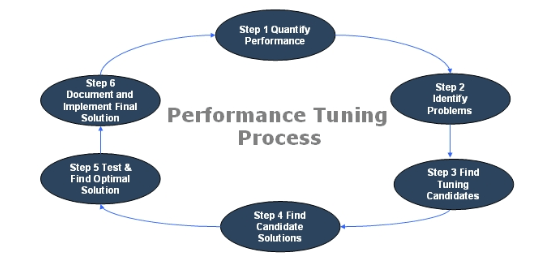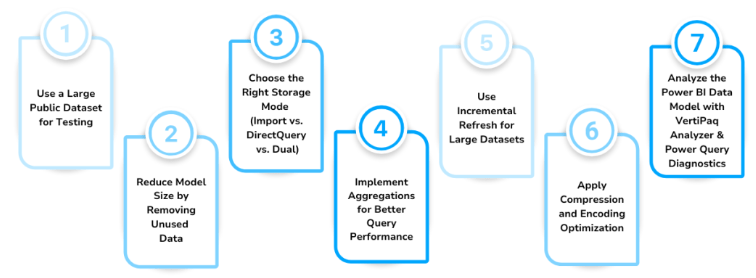
- Introduction
- Understanding MicroStrategy
- The Importance of Report Optimization
- Best Practices for Optimizing Report Performance
- Advanced Performance Optimization Techniques
- Monitoring and Analyzing Performance
- Key Metrics for Evaluating Report Performance
- Real-World Examples of Optimized MicroStrategy Reports
- Conclusion
Introduction
MicroStrategy Performance is one of the leading business intelligence (BI) tools organizations use to create powerful reports, dashboards, and analytics. However, as the volume of data grows and business requirements become more Business Analyst Training , users may experience performance issues, such as slow report generation times. Optimizing MicroStrategy reports is crucial for improving system efficiency and user satisfaction. This blog discusses best practices and techniques for optimizing MicroStrategy reports, ensuring faster performance, seamless user experiences, and more effective decision-making.
Understanding MicroStrategy
MicroStrategy is an enterprise-level business intelligence platform designed to help organizations create highly interactive and detailed reports and dashboards. It offers rich analytics capabilities, enabling users to combine data from multiple sources, conduct advanced analytics, and visualize insights through intuitive report designs. However, like any BI platform, performance can suffer when reports become complex, or the underlying data infrastructure isn’t optimized. Report performance in MicroStrategy largely depends on the efficiency of data querying, report design, and resource management.
Unlock your potential in Business Analyst with this Business Analyst Training .
The Importance of Report Optimization
In business intelligence systems like MicroStrategy, reports are critical for decision-making. Slow reports can result in frustration, decreased productivity, and delayed business insights. By optimizing report Complete List of SAP Modules, businesses can ensure they get the maximum value from their MicroStrategy deployment while minimizing the overhead on system resources. Efficient reporting not only enhances user experience but also accelerates the decision-making process, providing timely insights that drive business growth. Ultimately, optimized reports contribute to a more agile and responsive organization, improving both operational efficiency and competitive advantage. Effective report optimization improves the overall user experience by:
- Reducing load times for reports and dashboards
- Enhancing the scalability of reports as data grows
- Ensuring that business users can make timely, informed decisions based on data
- Partition Large Datasets: Partition large MicroStrategy Performance to improve query performance. By splitting large tables into smaller, more manageable segments, SQL queries can target only the relevant partition, reducing processing time.
- Enable Parallel Execution: Enable parallel execution in the database to process multiple queries simultaneously. This improves the overall response time for reports.
- In-Memory Caching: Leverage MicroStrategy’s in-memory caching capabilities to store frequently accessed data in memory for faster retrieval. Business Analyst Trainingis especially useful for reports that are run often, as it eliminates the need for repeated database SQL queries.
- Report Bursting: Report bursting allows you to generate a report for many recipients without querying the database multiple times. MicroStrategy can send customized versions of a report to different users, optimizing performance by reducing the number of queries.
- MicroStrategy Desktop Performance Monitoring: Use this built-in feature to analyze report execution times and identify bottlenecks.
- Database Query Logs: Check the logs to identify and optimize slow-performing queries.
- System Monitoring: Monitor system resources (CPU, memory, disk space) to ensure that resource bottlenecks are not impacting performance.
- Query Response Time: The time it takes for a query to return results. Lower response times indicate better report performance.
- Report Load Time: The time it takes for a full report to load and display to the user. Aim for fast load times to improve user experience.
- Database Query Efficiency: Evaluating the number of queries generated and their execution efficiency. Fewer and faster queries improve overall performance.
- Cache Hit Rate: The percentage of queries that are served from the SQL Server Integration Services rather than being re-executed. A higher cache hit rate means improved performance and less system load.
- Resource Utilization: Monitor CPU, memory, and disk usage to ensure reports don’t consume excessive system resources, which can impact overall server performance.
- User Satisfaction: Collect feedback from report users to gauge if the optimized reports meet their needs in terms of speed and accessibility.
Learn how to manage and deploy Business Analyst Services by joining this Business Analyst Training today.
Best Practices for Optimizing Report Performance in MicroStrategy
To optimize report performance in MicroStrategy, several best practices can be implemented by data professionals and administrators. One of the primary factors affecting performance is query design. Well-structured queries return data more efficiently, while poorly designed queries can create delays. For example, avoiding complex joins is crucial; simple joins tend to perform better, especially when dealing with large datasets. Additionally, limiting the number of objects in a report, such as tables, graphs, and metrics, helps prevent performance degradation, as each object requires a separate query. Efficiently applying filters early in the query process reduces the dataset size, which helps speed up report execution. Another effective strategy is to leverage intelligent caching, which stores the results of frequently executed queries. Introduction To SAP HANA allows reports to load faster by avoiding the need to re-execute the same queries. Setting cache expiration times is also essential to balance performance and data freshness. Efficient data modeling techniques are equally important for optimizing report performance. Using star or snowflake schemas helps minimize join complexity, while dimensional modeling ensures data is logically organized for efficient queries. Additionally, denormalizing data can improve query performance, though it may increase storage requirements. Optimizing metrics and filters also plays a significant role in performance. Minimizing complex calculations during report execution is advised, and instead, calculations should be performed during the ETL process or through pre-calculated columns. Using predefined metrics from the data model can also reduce the load on reports, avoiding unnecessary calculations. Multiple filters on large datasets can slow down performance, so it’s important to use filters efficiently and apply pre-aggregated data where possible.

The use of sub-reports can also impact performance. Each sub-report triggers a separate query execution, adding load time to the main report. It is advisable to use sub-reports sparingly and, when appropriate, combine multiple sub-reports into a single report or leverage drill-down capabilities. For complex reports, using MicroStrategy’s Report Services feature can be more efficient than relying on sub-reports. Aggregation and pre-aggregated data are key to boosting performance. Pre-aggregating data at the database level reduces the amount of data processed during report execution, and using aggregate tables helps store pre-calculated results for common aggregations, speeding up report generation. Managing report complexity is another crucial aspect of performance optimization. A complex report with numerous objects, visualizations, and calculations can severely impact load times. Simplifying report design by focusing on the most critical data and metrics can help streamline execution. Upgraded Version of Tableau, using drill-throughs allows users to access more detailed data only when necessary, reducing the report’s complexity. Finally, optimizing the SQL queries generated by MicroStrategy is essential for improving performance. Reviewing the SQL queries and using tools like SQL Server Management Studio (SSMS) or Oracle SQL Developer can help analyze the execution plan and ensure the query is optimized. Implementing indexing on frequently queried tables and columns also speeds up data retrieval, leading to faster report performance. By applying these best practices, organizations can ensure that their MicroStrategy reports are optimized for speed, efficiency, and scalability.
Advanced Performance Optimization Techniques
For larger or more complex environments, consider these advanced techniques: Partitioning and Parallel Execution

Monitoring and Analyzing Performance
MicroStrategy provides several tools to monitor and analyze the performance of reports:
Looking to master Business Analyst? Sign up for ACTE’s Business Intelligence Master Program Training Course and begin your journey today!
Key Metrics for Evaluating Report Performance
Preparing for Business Analyst interviews? Visit our blog for the best Business Analyst Interview Questions and Answers
Real-World Examples of Optimized MicroStrategy Reports
Organizations in various industries have successfully implemented these best practices to optimize their MicroStrategy reports. For example, a large retail chain reduced report generation time by 70% by pre-aggregating sales data and applying intelligent caching. A financial institution uses partitioning and parallel execution to speed up its investment portfolio reports, improving report load times from several minutes to under Qlikview and Tableau. Similarly, a healthcare provider implemented star schema modeling and optimized SQL queries to significantly reduce report processing times, resulting in faster decision-making for clinical teams. A global manufacturing company leveraged aggregation tables and simplified report designs to improve performance, ensuring real-time insights into production and supply chain operations. By incorporating these strategies, businesses are able to streamline workflows and improve overall operational efficiency.
Conclusion
Optimizing MicroStrategy report performance is a key consideration for any organization that is using the BI platform to create actionable insights. MicroStrategy Performance can significantly improve report speed and system efficiency by following best practices such as optimizing query design, leveraging caching, using efficient data modeling techniques, and simplifying report complexity. Business Analyst Training , employing advanced techniques such as partitioning and report bursting will enhance performance in large-scale environments. Through careful design and optimization, organizations can ensure that their MicroStrategy deployment delivers timely, reliable insights, empowering decision-makers to act faster and more effectively.





